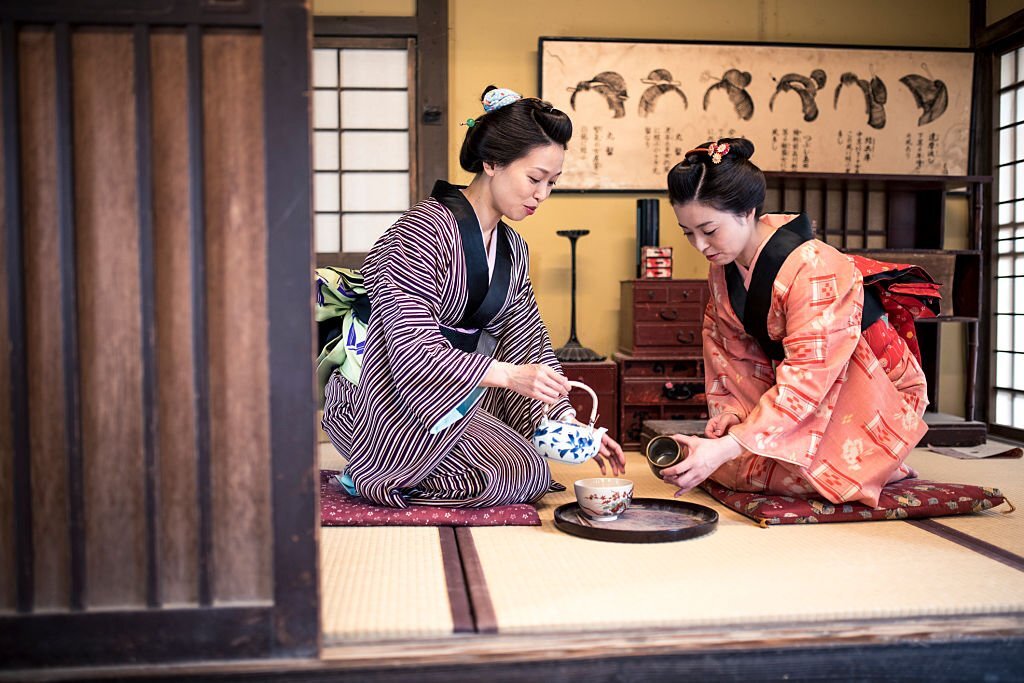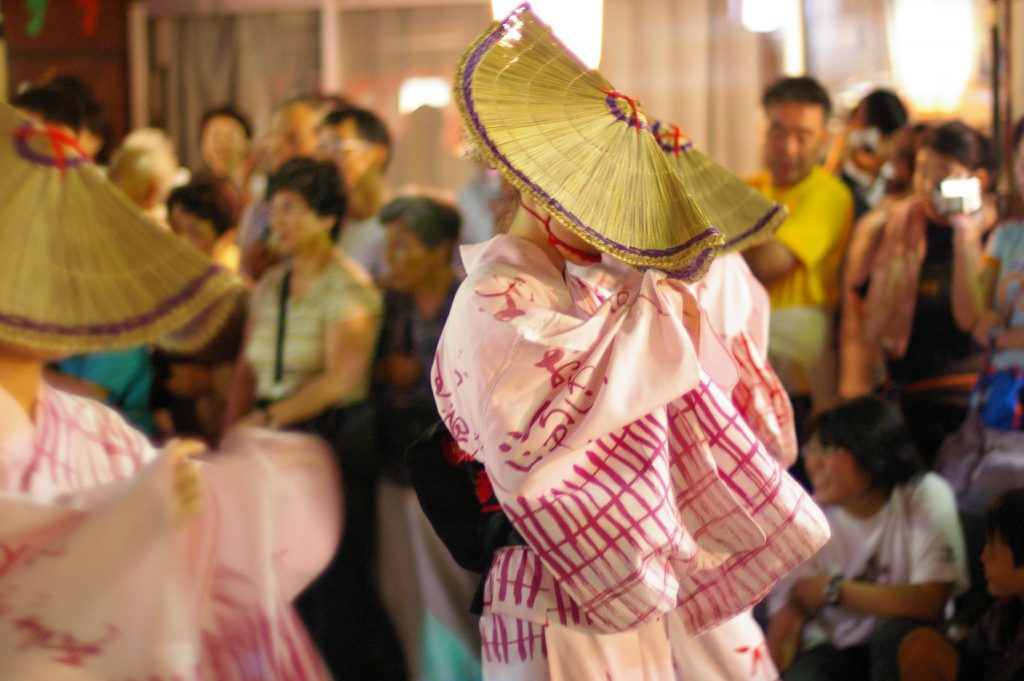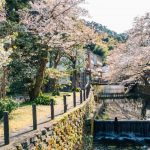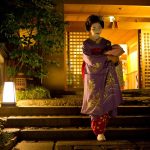Why are the Japanese not religious?
They may pray at shrines and visit temples for blessing, but compared to the Western way of commuting to a place of worship or personal devotion, Japan lacks religion in its daily habits.
This might seem especially odd to anyone who has seen the many tiny shrines tucked into city alleys or woven in between modern architecture.
This probably confuses even those who witnessed matsuri, festivals hosted by a temple or shrine. The crowds and intensity would bring the words “religious fervor” to mind, and they are no rare event!
In reality, all that is less about religion and much more about cultural rituals. Religion connects to a long and complex history. Politics and government have cemented cultural spiritualism over any one religion.
The central government nationalized Shintoism

Historically and traditionally, Shintoism is the oldest spiritual belief system in Japan. However, Shintoism may not classify strictly as a “religion”. It seems to have grown organically, with no specific founder or creator, prescribed dogmas, or sayings. No specific details apply to all of its branches, and there is no one set of practices or rituals.
Shintoism holds that kami, deities or divine beings, exist in practically every living and non-living thing. They exist in people who are divinely blessed or, a classic phrase, “divinely appointed” for some purpose.
Shintoism, as a “national” practice, began to centralize political power between the 400s and the 600s CE. The emerging Imperial Family invested in its credibility, as every emerging central power must, to solidify its position. There was no better credibility than acknowledging the emperor as kami, a deity or divine being.
Shintoists considered that noble or allied houses had kami lower than the emperor’s but higher than other houses. The emperor and his family became head of Japan, sanctioned by (or according to mythology related to) the gods.
You have probably heard of Amaterasu, kami (goddess) of the sun. She is a major deity and part of the creation story. Modern established mythology describes the imperial family by saying they descended from this goddess. Their bloodline was their “divine appointment” to rule.
Buddhism blended systems instead of taking over

In the 500s, Buddhism entered Japanese belief systems without much resistance. Buddhism is more rigorously organized in its origin, scriptures, and key figures than Shintoism. Because of this, as the more established religion, Buddhism gave Shintoism the organization it needed.
Buddhism integrated with Shintoism. Religious leaders placed shrines and temples together, priests double-hatting or supporting both sects. They preserved the religious structure and belief system. Shintoists did not initially see Buddhism as an un-Japanese religion, or at least they did not consider its lack of endemicity a problem.
Because of this, the Japanese people could live by both Shintoism and Buddhism. Through the syncretic combination, they simultaneously honored their emperor and upheld Japanese history and culture.
In the 1200s, however, Ise Shinto or Watarai Shinto emerged. Its proponents desired to create a “pure” Japanese belief system based solely on Shinto practices. The movement, considered “anti-Buddhist,” was possibly the first as well to consider Buddhism “non-Japanese.” Kami became more non-material entities and emphasis was placed on the spiritual (versus physical) nature of Shintoism.
This “pure” form of Shinto did not actively restructure the government or change national belief structures. However, it did introduce the concept of a “Japanese” spiritualism the nation could claim as its own.
Read More: Most Beautiful Shrines & Temples In Tokyo
Neo-Confucianism added structure to an already blended set of rituals

Shintoists and the imperial family originally centralized the religion. They blended various Shinto practices from around the archipelago that later formed modern Japan. Their approach gave the belief system a certain level of malleability and porousness. Shintoism absorbed Buddhism and later neo-Confucianism without irreconcilable differences.
Buddhism added structure to the Shinto mythology and scriptures. Later, the Tokugawa shogunate in the 1600s saw the rise of neo-Confucianism. This belief system added philosophical expansion to how the nation should look up to and treat its emperor. Neo-Confucianism also defined the responsibilities of the imperial family for the nation.
Neo-Confucianism had clear rules and hierarchies for familial, social, and political interaction. Neither Shintoism nor the form of Buddhism present in Japan at the time had these rules and hierarchies. Filial piety, in particular, became a significant concept, one that strengthened emperor worship. In this case, filial piety upheld the political and social structure of Japan.
If you take a closer look at neo-Confucianism in general, it is a set of philosophical beliefs. Neo-Confucianism was easy to assimilate into existing hierarchical social structures. The philosophy left a lasting imprint on the political and cultural structures of China of course, but easily spread to the Korean Peninsula and Japan.
You May Also Like: Why the Japanese Are So Polite
Christianity sometimes aligned with hostile foreign countries

In the 1600s, Christianity entered Japan through missionaries and traders from Western nations. Like Buddhism, Christianity was a clearly established religion with a founder, scriptures, and practices. Unlike Buddhism, Christianity tends to lean towards absolutism in its teachings. The religion often considers syncretism out of the question, preaching the virtues of absolute truth.
For the Japanese, living under such doctrine ran opposite to the cultural and political atmosphere that had defined their nation for centuries. Additionally, their general mistrust and desire to repel the influence of Western nations and their traders, made rejecting Christianity simple That Catholicism and Protestantism were presented distinct forms of Christianity—to Christians, anyway—did not mean much to the Japanese. This demonstrates the way the Japanese considered religion as more of a political or nationalistic alignment, rather than a quest for divine truth.
You May Also Like: Why Japanese Don’t Wear Sunglasses
The modern cultural setting does not need Shintoism to form a national identity

Shintoism saw another rise in the 1800s, specifically during the Meiji Restoration in 1868. Again, the concept of emperor worship became a pivotal issue as the nation modernized under Emperor Meiji. Traders introduced Western clothing, technology, and concepts. Perhaps because of this, Shintoism existed to highlight a spirituality that was uniquely Japanese.
The industrialization of Japan created a deeper appreciation for the Japanese value system.National modernization incited the Japanese people to take a greater interest in their government and governance in general. The central government and the Japanese people no longer sought mandated spiritual or religious systems. Spiritual or religious systems did not keep the nation together or uplift the emperor as in the past.
As a result, the undercurrent of Shintoism remains a spiritual foundation, though it has fallen out of the public mind. At the very least, it underpins many rituals that are deeply a part of Japanese identity. However, no one established religion commands the daily lives of the Japanese. The people now practice everyday cultural rituals that don’t have much to do with religion, but rather pay respect to cultural heritage. These rituals enrich the experience of Japan both for them and for you!










